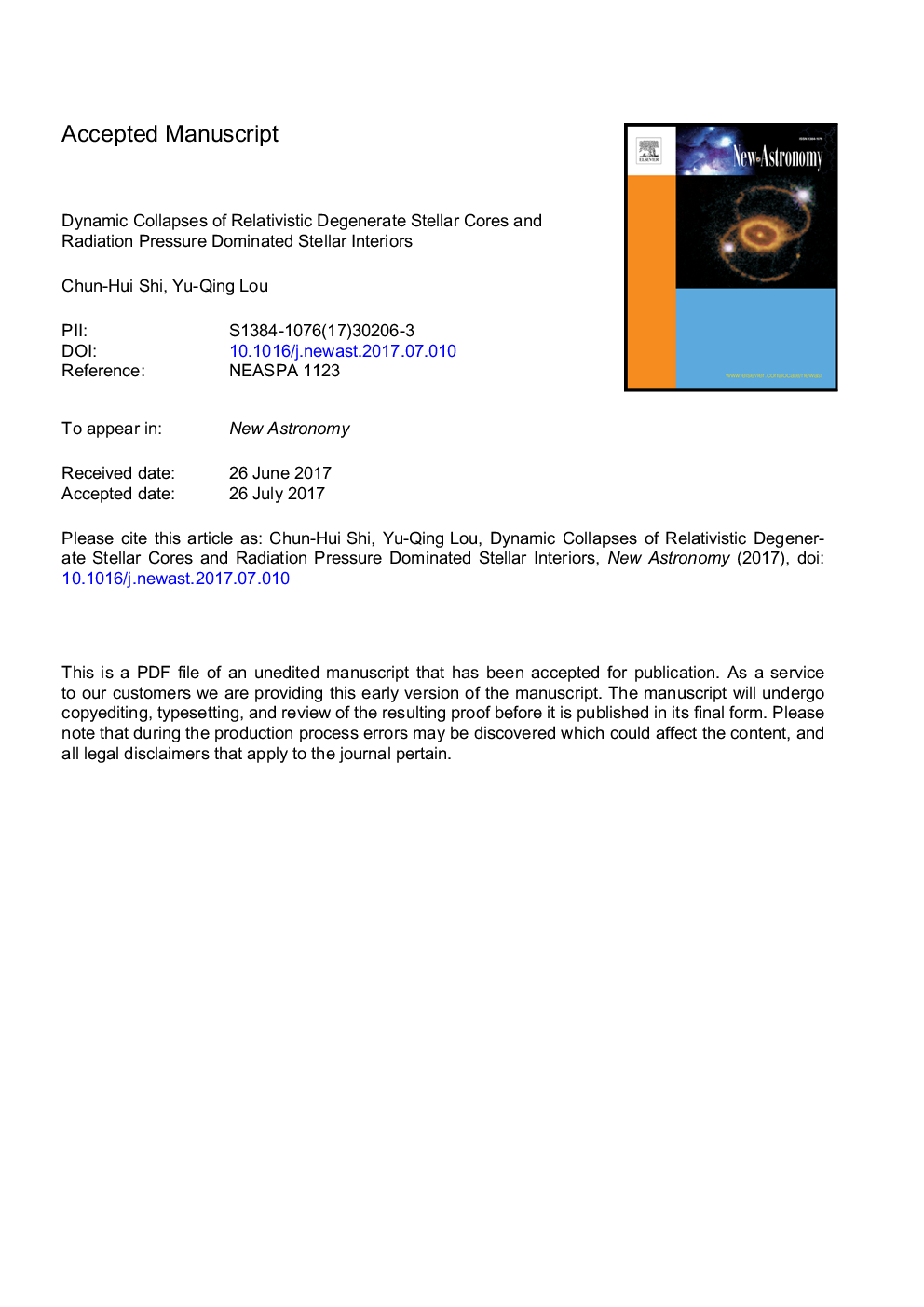| Article ID | Journal | Published Year | Pages | File Type |
|---|---|---|---|---|
| 5487713 | New Astronomy | 2018 | 13 Pages |
Abstract
We investigate and explore self-similar dynamic radial collapses of relativistic degenerate stellar cores (RDSCs) and radiation pressure dominated stellar interiors (RPDSIs) of spherical symmetry by invoking a conventional polytropic (CP) equation of state (EoS) with a constant polytropic index γ=4/3 and by allowing free-fall non-zero RDSC or RPDSI surface mass density and pressure due to their sustained physical contact with the outer surrounding stellar envelopes also in contraction. Irrespective of the physical triggering mechanisms (including, e.g., photodissociation, electron-positron pair instability, general relativistic instability etc.) for initiating such a self-similar dynamically collapsing RDSC or RPDSI embedded within a massive star, a very massive star (VMS) or a supermassive star (SMS) in contraction and by comparing with the Schwarzschild radii associated with their corresponding RDSC/RPDSI masses, the emergence of central black holes in a wide mass range appears inevitable during such RDSC/RPDSI dynamic collapses inside massive stars, VMSs, and SMSs, respectively. Radial pulsations of progenitor cores or during a stellar core collapse may well leave imprints onto collapsing RDSCs/RPDSIs towards their self-similar dynamic evolution. Massive neutron stars may form during dynamic collapses of RDSC inside massive stars in contraction under proper conditions.
Keywords
Related Topics
Physical Sciences and Engineering
Physics and Astronomy
Astronomy and Astrophysics
Authors
Chun-Hui Shi, Yu-Qing Lou,
